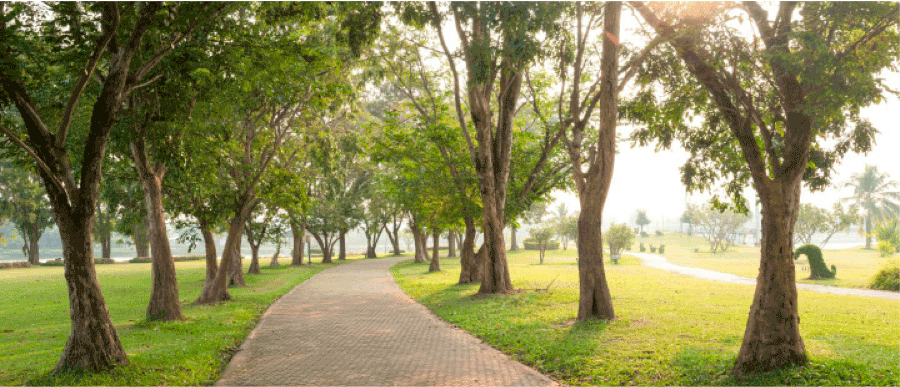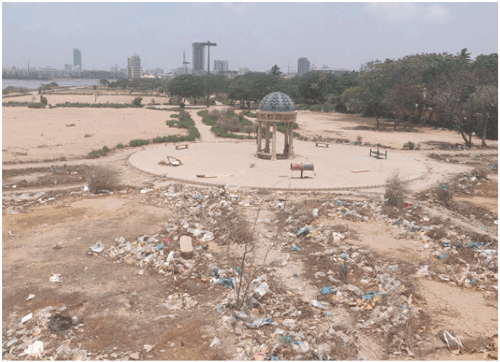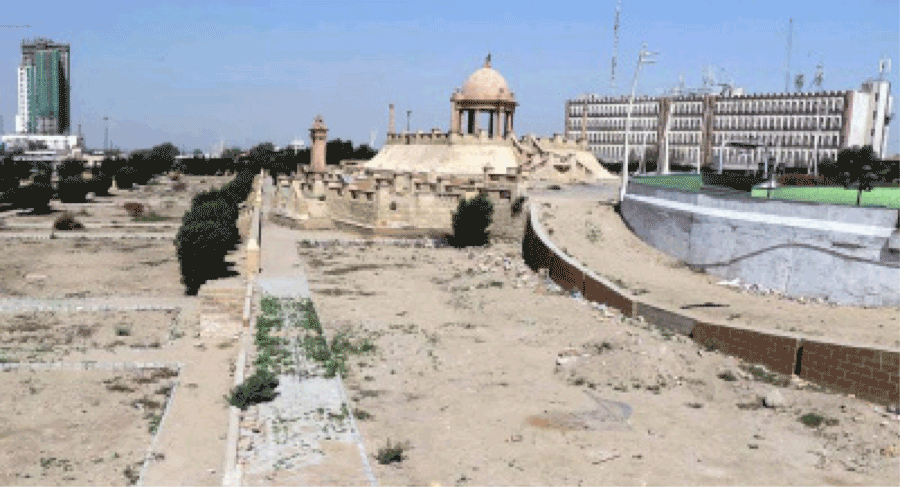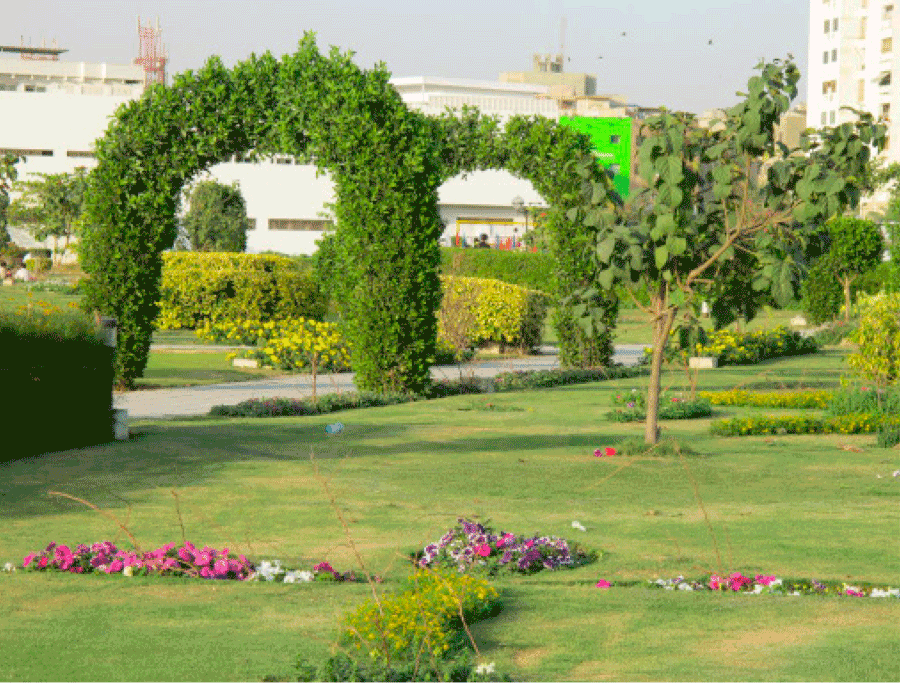Of Aunties’ Parks and Awami Parks
By Vaqar Ahmed | Newsline Special | Published 6 years ago
If dear old Karl Marx were to visit Karachi today, he would have no problem figuring out the class structure of this huge metropolis of 20 million. All he would need to do would be to, visit the beaches and public parks. There are two categories of public parks and two categories of public beaches: One for the huge number of the unkempt poor and the other for the small number of the rich. It is, in effect, an unlegislated apartheid system.

The parks for the rich are popularly known as the ‘Aunty’s Park’ or the ‘General’s Park.’ Parks like the Zamzama Park and the Nisar Shaheed Park in the Defence Housing Authority fall into this category. These parks are mainly used by well-off men and women whose primary purpose is to walk or jog for health reasons, with weight loss as the primary objective. Armed guards accompany some of these visitors. The visitors come in cars, SUVs, and the notorious double-cabin trucks with Kalashnikov-toting guards occupying the rear section. The Rs 20 fee charged for entry is a non-issue for those arriving in these multi-million rupee vehicles. Once in a while, some poor fellow with his family of four turns up at the gate and turns away when faced with the daunting prospect of paying Rs 80 for entry. The expectant faces of the children drop as the father beats a hasty retreat.
The second category of parks is the Awami Parks. Ordinary folk from all walks of life frequent them, mainly to have a family picnic or a romantic outing for two. Younger people come to play cricket or football here. They belong mostly to the working class districts of Karachi and their mode of transport is motorcycles (an average four to a bike), crowded buses and jam-packed Suzuki mini trucks. Unlike the business-like pursuit of health in the Aunty Parks, the purpose here is simply to have a good time.

Shaheed Benazir Bhutto Park.
The largest of such parks is the Bin Qasim Park, located in Clifton close to the Abdullah Shah Ghazi shrine. It is the biggest public park in Karachi.
If one were seeking evidence of the apathy of Karachi Municipal Corporation (KMC) and the Sindh Government towards spaces used by the common people of Karachi, one does not need to look beyond the Bin Qasim Park.
The park was completely destroyed by na maloom afraad (persons unknown) in 2017. The concrete benches were torn apart; the green spaces scorched; the trees felled; and the stairs and walkways ripped. Then a news item appeared in the press that the park had been handed over to the adjacent Icon Office Tower, Bahria Town. The owner of Bahria Town, Malik Riaz, Pakistan’s biggest real estate tycoon, tried to pacify the naysayers by offering to turn the park into a state-of-the art amusement park. Given the history of land-grabbing by Bahria Town, public opinion did not change. The fear was that Malik Riaz would turn this public space into a parking lot for visitors to his huge Icon Tower. Articles appeared in the press about this illegal act and the plan to hand over the Park to Bahria town was shelved.
The agreement between KMC and Bahria Town which surfaced during this controversy, showed that the park was to be maintained by Bahria Town for a sum of Rs 17 million for one year.
There was no explanation as to why the park, instead of being maintained, was deliberately destroyed.
Then one fine day, the park was closed to the public and a notice was posted outside that maintenance work was in progress. The park was indeed fixed over a period of six months, after which it was locked once again and it remained closed for over a year.
Initially Prime Minister Imran Khan was expected to inaugurate the park during his visit to Karachi in September 2018. The visit did take place but the park’s inauguration did not. Members of the Sindh Government, PTI legislators, the Commissioner Karachi, the Mayor Karachi and the Governor of Sindh were approached by a concerned member of civil society to open the park to the public but the park remained closed.
As part of the renovations, double-layered barbed wire was installed on the perimeter wall of the park, giving the appearance of a high security installation to a simple public space. Interestingly, since the small columns inside the openings in the wall have always been breached by the public, so the barbed wire does nothing to prevent entry.

Bin Qasim Park.
Nearly two years after its closure, the park was finally opened by no less than the Prime Minister himself. No explanation was offered as to why access to a public park was denied to the people for nearly two years.
Another public park frequented by the common man is the Benazir Park opposite Clifton’s Boating Basin area.
This park was reasonably well-maintained for some time but over the past few years it has deteriorated significantly. The water in the basin is full of garbage and a bad stench pervades the air. There seems to be a constant cycle of tearing down of benches and railings and rebuilding them. It all seems like a great way of making money by awarding repair contracts to someone repeatedly.
Both these parks charge 20 rupees as entrance fee. It is entirely unfair to charge entry fee for a public park that is frequented by visitors from the lower income bracket.
The reason for the criminal neglect of the Bin Qasim Park and the Benazir Park is obvious: Unlike the upscale parks of the ‘Aunty’ and the ‘General’ variety, these parks are frequented by the poorer sections of society. This class has no clout in the corridors of power; consequently these spaces are opened to them with great fanfare, then neglected and even wantonly destroyed, and rebuilt all over again – with public money.

Zamzama Park.
A treatment similar to that of the public parks has been meted out to the Seaview Beach located in Clifton. The beach is not the destination of the well-heeled, who head off to a hut in Sandspit, Hawkesbay or Paradise Point.
The beach that once stretched unbroken, from the outer limits of Defence Housing Society to the oil terminal of Keamari, is now dotted with garbage dumps, rubble brought in for landfill, and concrete piles driven in to serve as foundations for future apartment buildings. It is impossible to walk on parts of the beach due to the garbage and rubble. Following deaths by drowning in 2014, the beach was closed to the public for six months. In 2017, yet another ban was imposed due to the rough conditions of the sea and more than 500 people were arrested for violating the ban. The authorities installed lifeguard towers with much fanfare. Today, these lie abandoned and wasted.
Rather than setting up proper warning systems and delineating the danger areas, the only thing the authorities seem capable of doing is denying access to the beach, which is the most popular public space in a city that has a serious dearth of any form of affordable entertainment for the masses.
For a city that generates nearly 65 per cent of the country’s total country revenue, Karachi is in a pitiable state. The infrastructure has crumbled. Even a two-day spell of rain (once a year) brings the city to a standstill and causes death and destruction. Given the nearly unlivable conditions in the city, the further destruction of the few public places left for the working class to relieve the stress of daily life, is regrettable. The neglect and the indifference of the provincial government, the civic authorities and the leading political parties towards this city and its teeming, toiling masses, is criminal.
The writer is an engineer by training and a social scientist by inclination.


